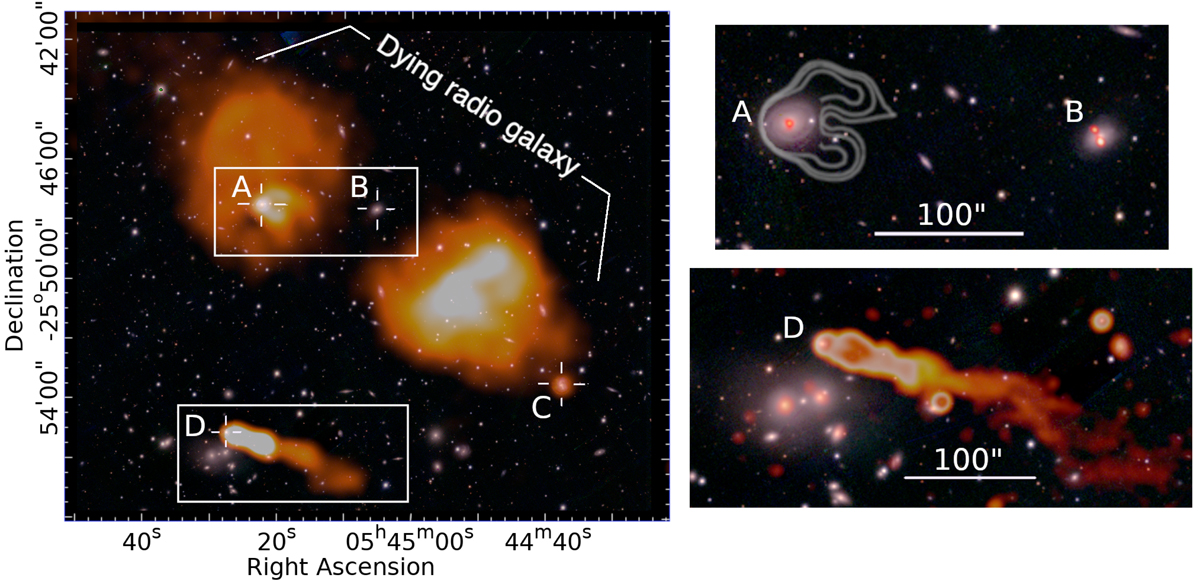Fig. 21.

Download original image
A possible dying radio galaxy in Abell 548B. Left: diffuse emission filtered 25″ resolution MGCLS Stokes-I intensity image of Abell 548B (orange) overlaid on the false-colour gri-composite Pan-STARRS image. Previously misidentified structures (see Sect. 7.6.2 for details) are revealed to be a diffuse or dying radio galaxy to the north and a tailed radio galaxy to the south. The brightness scale is logarithmic, saturating at 1 mJy beam−1. Radio sources A–D have clear optical counterparts, with B the likely host of the diffuse lobes and A a spiral galaxy embedded in the eastern lobe. Top right: zoomed-in view of the boxed region around sources A and B. White contours, showing the 15″ resolution MGCLS Stokes-I intensity at levels of (0.3, 0.35, 0.5) mJy beam−1 and edited for clarity, indicate tailed emission associated with the spiral galaxy, A. Red compact structures are from VLASS (Lacy et al. 2020) at 3 GHz with a resolution of 2.9″ × 1.8″ (p.a. 50°). The single VLASS component associated with A has a peak flux of 30 mJy beam−1. There is a small double VLASS source associated with B, with a peak flux of 3.3 mJy beam−1, indicating possible recent radio activity. Bottom right: zoomed-in view at full resolution (7.4″ × 7.4″) of the boxed region around the tailed source, D. The brightness scale is non-monotonic, and the peak brightness in the frame is 7 mJy beam−1. 100″ corresponds to 84 kpc at the cluster redshift of 0.042.
Current usage metrics show cumulative count of Article Views (full-text article views including HTML views, PDF and ePub downloads, according to the available data) and Abstracts Views on Vision4Press platform.
Data correspond to usage on the plateform after 2015. The current usage metrics is available 48-96 hours after online publication and is updated daily on week days.
Initial download of the metrics may take a while.


